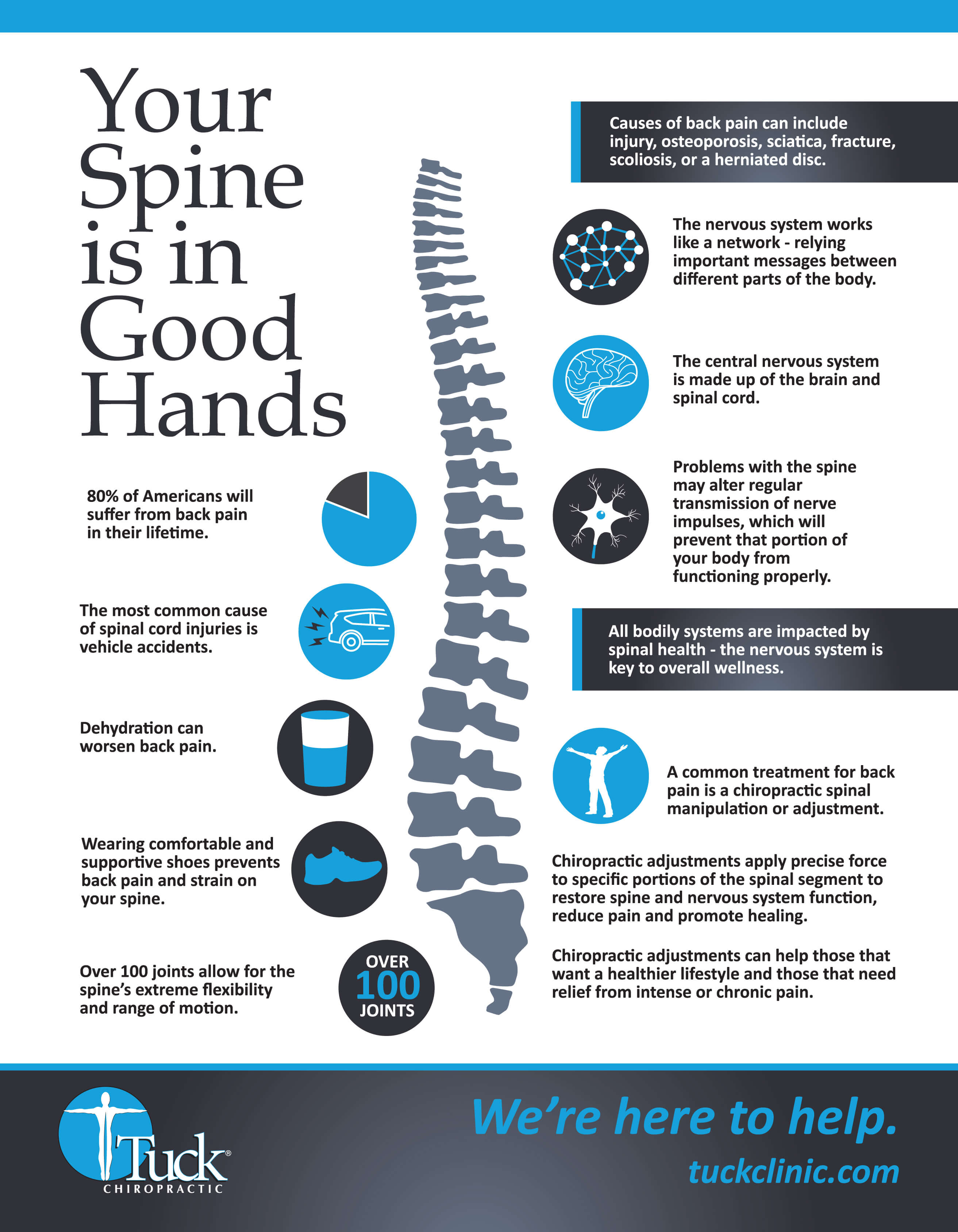Address Neck And Back Pain By Determining The Day-To-Day Routines That Could Be Contributing To It; Small Modifications Can Pave The Way To A Life Without Pain
Address Neck And Back Pain By Determining The Day-To-Day Routines That Could Be Contributing To It; Small Modifications Can Pave The Way To A Life Without Pain
Blog Article
Published By-Hermansen Glud
Preserving correct position and preventing usual pitfalls in daily tasks can dramatically influence your back wellness. From how you rest at your desk to exactly how you raise heavy objects, small modifications can make a big distinction. Imagine https://zaneeaztn.bloggerbags.com/36402091/astonishing-insights-right-into-the-unanticipated-advantages-of-chiropractic-treatment-will-certainly-reinvent-your-understanding-of-holistic-wellness-and-wellness without the nagging back pain that prevents your every action; the solution might be less complex than you assume. By making a few tweaks to your daily practices, you could be on your way to a pain-free presence.
Poor Pose and Sedentary Lifestyle
Poor stance and a sedentary way of life are two major contributors to neck and back pain. When you slouch or suspicion over while resting or standing, you placed unnecessary pressure on your back muscles and back. find more info can bring about muscle discrepancies, stress, and eventually, persistent back pain. Furthermore, sitting for extended periods without breaks or physical activity can compromise your back muscle mass and lead to stiffness and discomfort.
To fight poor position, make a mindful initiative to sit and stand right with your shoulders back and aligned with your ears. Remember to keep your feet level on the ground and prevent crossing your legs for prolonged periods.
Including regular stretching and strengthening workouts into your daily routine can also help enhance your stance and reduce back pain related to an inactive way of life.
Incorrect Training Techniques
Incorrect training strategies can substantially contribute to pain in the back and injuries. When you raise hefty objects, keep in mind to bend your knees and utilize your legs to lift, as opposed to relying upon your back muscles. Avoid turning your body while lifting and keep the item near to your body to minimize stress on your back. https://www.digitaljournal.com/pr/the-musculoskeletal-wellness-clinic-is-improving-patients-lives-with-its-wide-range-of-pain-management-physical-therapy-and-medical-services to maintain a straight back and stay clear of rounding your shoulders while raising to prevent unnecessary stress on your back.
Constantly assess the weight of the object prior to lifting it. If it's too heavy, request aid or usage devices like a dolly or cart to move it securely.
Remember to take breaks during lifting jobs to offer your back muscles a chance to relax and avoid overexertion. By applying proper training strategies, you can protect against back pain and lower the danger of injuries, ensuring your back stays healthy and balanced and strong for the long term.
Lack of Normal Exercise and Stretching
A sedentary lifestyle devoid of routine workout and stretching can considerably contribute to pain in the back and pain. When you don't engage in exercise, your muscular tissues come to be weak and stringent, leading to bad pose and increased strain on your back. Normal exercise helps strengthen the muscle mass that sustain your spine, improving stability and reducing the risk of neck and back pain. Including extending into your routine can also enhance adaptability, avoiding stiffness and discomfort in your back muscle mass.
To stay clear of neck and back pain brought on by a lack of exercise and extending, go for at the very least thirty minutes of modest physical activity most days of the week. Include exercises that target your core muscular tissues, as a strong core can assist minimize pressure on your back.
In addition, take breaks to extend and relocate throughout the day, especially if you have a workdesk job. Easy stretches like touching your toes or doing shoulder rolls can help soothe tension and prevent back pain. Prioritizing routine workout and extending can go a long way in maintaining a healthy back and lowering pain.
Final thought
So, remember to stay up right, lift with your legs, and remain energetic to stop back pain. By making simple adjustments to your day-to-day practices, you can avoid the pain and constraints that feature pain in the back. Look after your spinal column and muscles by practicing great position, appropriate lifting methods, and routine exercise. Your back will certainly thank you for it!
